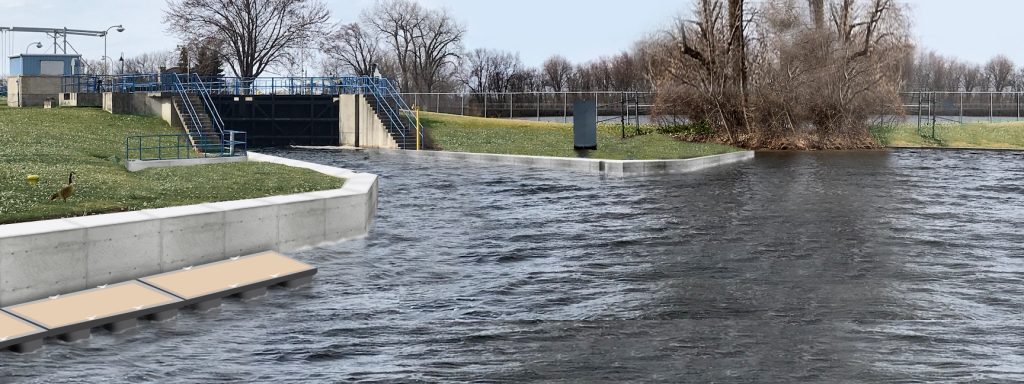On June 25, 2024, the board of directors of the Fox River Navigational System Authority (FRNSA) voted to suspend work on plans to re-open the Menasha lock. The lock was closed in 2015 due to the discovery of the round goby, an invasive fish species populating the Great Lakes. In order to keep these fish from reaching the Lake Winnebago system, the DNR recommended the lock closure, and FRNSA complied.
All solutions for re-opening the lock are too expensive for the existing FRNSA budget and could not be accomplished without significant state and federal funding.
Since 2015 FRNSA has been working with fish researchers, engineers, and an independent fisheries management firm to review the most recent scientific research on invasive species barriers and solutions that have worked for other communities in the Great Lakes region. During this time FRNSA has invested $750,000 to develop plans with an additional $250,000 for invasive species testing.
If the project were to move forward, FRNSA would have to invest in preparing a full set of plans and construction specs and present it to the DNR for review and approval.

Our goal is to restore navigation from Lake Winnebago through the lock system at Menasha, but also prevent the spread of the round goby into Lake Winnebago.
In the last ten years, the round goby has become abundant in the Fox River and Little Lake Butte des Morts. There is no guarantee that building a barrier at the Menasha lock would keep the invasive species out of Lake Winnebago. It is possible that we could invest in this system only to have the goby invade Lake Winnebago and render the barrier system obsolete.
FRNSA will continue to test for the presence of invasive species in the navigation channel and the waters around the Menasha lock. If the round goby does populate Lake Winnebago, we will work with DNR representatives to determine the best course of action regarding the Menasha lock.
These are details of the project that is currently on hold.
The concept is 60% designed and involves building a concrete, U-shaped channel adjacent to and downstream from the Menasha lock. Electrodes would be recessed in the bottom and sides of the channel. This type of a barrier will allow boat traffic to pass through the channel while halting the passage of fish. The barrier delivers a pulsing DC current to fish entering the channel, causing them to turn around and not enter the lock. The DC current in the water is a slower pulse at a lower frequency, so this is nothing like the electrical current that you might have in your home.
To develop the plan, biologists at Kleinschmidt conducted a series of experiments on round goby and their reactions to an electric field in the water column. The research confirmed these changes:
As the plan currently stands, these details have been identified, but would need further development, testing, and approval by the DNR.
The plan itemizes safety policies to protect all boaters and staff while crossing the electric deterrent system or while inside the lock.
The Authority completed a plan that was submitted to the DNR for review and comment. The primary portions of the documents are available for public review.
A report on the design of the electric barrier is at this link
A report showing the design of the electric barrier at 60% completion is at this link
A report of construction materials specifications is at this link
An operating manual for the system is at this link.
The plan and supporting studies and documentation was originally presented to the DNR in October of 2018. Copies of that report may be found at this link: Part 1, Part 2. At that time, the DNR had several questions posed to researchers and fish management experts. FRNSA commissioned further research on these topics that include:
A comprehensive review of the round goby available at this link
A comprehensive report on the electric barriers currently in operation available at this link
If you have questions about the barrier or any plans, please use our contact form.

